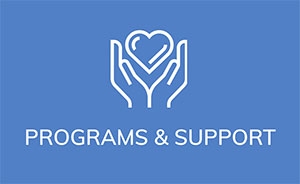Over the course of a year of monthly meetings, The CLL Bloodline will teach the BASICS needed to understand CLL, bring news, help with acronyms and new vocabulary, and offer simple fun quizzes.
MONTHLY QUIZ: CLL (chronic lymphocytic leukemia) and SLL (small lymphocytic lymphoma)
- Are entirely different unrelated cancers.
- Are related but different cancers.
- Are the identical cancers in different parts of the body; SLL mainly in the nodes only, CLL in the blood and in the lymph nodes even if they are not enlarged.
- SLL may become CLL.
- 3 and 4 are correct.
ANSWER: The correct answer is #5. To diagnose CLL there must be > 5000 identical or clonal B lymphocytes per microliter (μl) of blood. In SLL, clonal B cells with the same immunophenotyping (genetic fingerprinting) as in CLL are found in at least one lymph node, but there are < 5000 of these cells per μl of blood. SLL becomes CLL if the count exceeds 5000. In CLL, CLL cells can be found even in normal size lymph nodes though there would rarely be a reason to biopsy a “normal” lymph node to check.
NEWS:
- Giving Tuesday is coming up on December 2! Every gift to CLL Society helps empower patients and care partners with trusted resources—and this year, thanks to a generous anonymous donor, the first $50,000 raised will be matched, doubling your impact.
- The newest episode of the CLL Society Podcast, CareCast, is now live! The Power of Community features Yvonne and her daughter Noni as they share how a CLL diagnosis reshaped their family, deepened their bond, and revealed the life-changing impact of connection and support.
- Join CLL Society for our next virtual event on November 19th, Ask Me Anything featuring Dr. Meghan C. Thompson and patient advocate Michele Nadeem-Baker.
- If you missed the webinar, Protecting Against Infections When Your Immunity Is Impaired with Dr. William Werbel, you can catch the replay along with the slide deck and webinar transcript.
- The Support Group Member Survey will be sent to all support group members in November; your feedback helps us improve our programs and better support the CLL community.
THE BASICS: Types of Treatment
Cellular therapies are treatments that use living cells as the “drug” to treat CLL. The first cellular therapy was a hematopoietic stem cell transplant (HSCT), or a bone marrow transplant. In CLL, this is always done using a matched donor’s stem cells, not the patient’s own cells. It may be curative, but it is high risk due to infections and graft versus host disease (GVHD), where the new immune system attacks not just the cancer but can also attack the patient’s skin, eyes, and gut. CAR-T (chimeric antigen receptor – T cells) is now approved in CLL (liso-cel) where the patient’s own T-lymphocytes are removed, usually sent off to be genetically reengineered to attack CLL cells, grown outside the body (ex-vivo), and then re-infused. There is no GVHD as it’s the patient’s own cells. Response rates are good in patient who may have few options, but they are only durable in the 20% who have a complete remission. Common side effects include neurotoxicity and cytokine release syndrome (CRS). CRS is when inflammatory molecules called cytokines are released causing flu-like symptoms and can rarely be fatal. Mostly they are mild, short term and can be successfully managed. There are new experimental CAR-T therapies including ones done locally with the promise of lower cost, quicker manufacturing time and better responses. Most exciting and novel are CAR-T cells made by directly injecting viral particles into the patient’s blood or lymph node. The patient’s T cells are reengineered inside their body or in-vivo.
WORD/ACRONYM OF THE MONTH: Allogeneic Hematopoietic Stem Cell Transplant (HSCT)
Allogeneic stem cell transplant is a procedure in which hematopoietic (blood forming) stem cells are taken from a genetically matched donor, often a sibling or unrelated matched donor and given to the patient through an IV. The cells migrate to and hopefully engrafts in the patient’s bone marrow, providing new blood stem cells to build all the blood components, and with it, a new immune system that recognizes and attacks the cancer as an invader. This is the desired outcome, called “Graft versus Leukemia (GVL).” It is still used in CLL, but much less often now due to new therapies including CAR-T that are usually tried first.
The CLL Society is invested in your long life. Please invest in the long life of the CLL Society.

